
Anime is hand-drawn and computer-generated animation originating from Japan. Outside Japan and in English, anime refers specifically to animation produced in Japan. However, in Japan and in Japanese, anime describes all animated works, regardless of style or origin. Many works of animation with a similar style to Japanese animation are also produced outside Japan. Video games sometimes also feature themes and artstyles that can be considered as "anime".
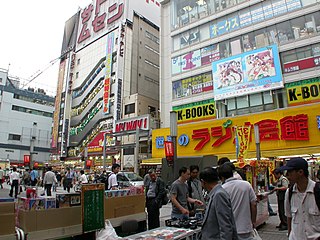
Otaku is a Japanese word that describes people with consuming interests, particularly in anime, manga, video games, or computers. Its contemporary use originated with a 1983 essay by Akio Nakamori in Manga Burikko.

Otaku no Video is a 1991 anime OVA spoofing the life and culture of otaku, individuals with obsessive interests in media, particularly anime and manga, as well as the history of Gainax, its creators. It is noted for its mix of conventional documentary film styles with a more traditional anime storytelling fashion. It is licensed in the United States by AnimEigo. The DAICON III and IV Opening Animations from the early 1980s are also featured in this OVA.
Ganguro (ガングロ) is an alternative fashion trend among young Japanese women which peaked in popularity around the year 2000 and evolved from gyaru.
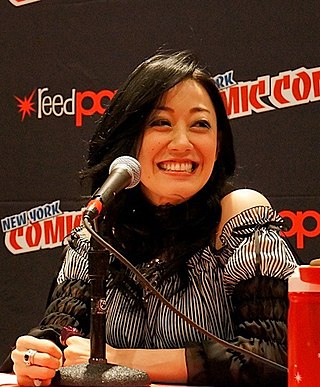
Yū Asakawa is a Japanese voice actress from Tokyo, Japan. She also provides the voice samples for Crypton Future Media's Vocaloid character, Megurine Luka. Asakawa is currently a freelance voice actress and was previously attached to Arts Vision.

In Japanese culture, Kogal refers to the members of the Gyaru subculture who are still in high school and who incorporate their school uniforms into their dress style. These high school girls are characterized by the typical bleached hair, make-up, shortened skirts, and wearing of loose socks. The word kogal is anglicized from kogyaru, a contraction of kōkōsei gyaru.

In Japanese popular culture, lolicon is a genre of fictional media which focuses on young girl characters, particularly in a sexually suggestive or erotic manner. The term, a portmanteau of the English words "Lolita" and "complex", also refers to desire and affection for such characters, and fans of such characters and works. Associated with unrealistic and stylized imagery within manga, anime, and video games, lolicon in otaku culture is generally understood as distinct from desires for realistic depictions of girls, or real girls as such, and is associated with the concept of moe, or feelings of affection and love for fictional characters as such.

Lolita fashion is a subculture from Japan that is highly influenced by Victorian clothing and styles from the Rococo period. A very distinctive property of Lolita fashion is the aesthetic of cuteness. This clothing subculture can be categorized into three main substyles: 'Gothic', 'Classic', and 'Sweet'. Many other substyles such as 'Sailor', 'Country', 'Hime' (princess), 'Guro' (grotesque), 'Qi' and 'Wa', 'Punk', 'Shiro' (white), 'Kuro' (black), and 'Steampunk' Lolita also exist. This style evolved into a widely followed subculture in Japan and other countries in the 1990s and 2000s and may have waned in Japan as of the 2010s as the fashion became more mainstream.
The following is a glossary of terms that are specific to anime and manga. Anime includes animated series, films and videos, while manga includes graphic novels, drawings and related artwork.

Akiba-kei or Akiba-chan (アキバちゃん) is a Japanese slang term for Akihabara style. Akihabara is a district in Chiyoda, Tokyo where many otaku—or obsessive fans of anime, manga, idol, and video games—gather.
Aya Takano is a Japanese painter, Superflat artist, manga artist, and science fiction essayist. Aya Takano is represented by Kaikai Kiki, the artistic production studio created in 2001 by Takashi Murakami.

Moe anthropomorphism is a form of anthropomorphism in anime, manga, and games where moe qualities are given to non-human beings, objects, concepts, or phenomena. In addition to moe features, moe anthropomorphs are also characterized by their accessories, which serve to emphasize their original forms before anthropomorphosis. The characters here, usually in a kind of cosplay, are drawn to represent an inanimate object or popular consumer product. Part of the humor of this personification comes from the personality ascribed to the character and the sheer arbitrariness of characterizing a variety of machines, objects, and even physical places as cute.
Akio Nakamori, real name Ansaku Shibahara, is a Japanese columnist and editor born on January 1, 1960, in Mie Prefecture, Japan. He is credited as popularizing the term "otaku" in its modern colloquial usage. After dropping out of Meiji University's Nakano Junior and Senior High Schools, he graduated from Wako University. Along with Yūichi Endō, he launched the Tokyo Otona Club in 1982.
Japanese popular culture includes Japanese cinema, cuisine, television programs, anime, manga, video games, music, and doujinshi, all of which retain older artistic and literary traditions; many of their themes and styles of presentation can be traced to traditional art forms. Contemporary forms of popular culture, much like the traditional forms, are not only forms of entertainment but also factors that distinguish contemporary Japan from the rest of the modern world. There is a large industry of music, films, and the products of a huge comic book industry, among other forms of entertainment. Game centers, bowling alleys, and karaoke parlors are well-known hangout places for teens while older people may play shogi or go in specialized parlors. Since the end of the US occupation of Japan in 1952, Japanese popular culture has been influenced by American media. However, rather than being dominated by American products, Japan localised these influences by appropriating and absorbing foreign influences into local media industries. Today, Japanese popular culture stands as one of the most prominent and influential popular cultures around the world.
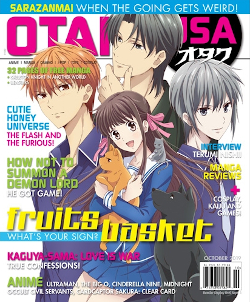
Otaku USA is a bimonthly magazine published by Sovereign Media, which covers various elements of the "otaku" lifestyle from an American perspective. The issues were accompanied by a DVD featuring three anime episodes but as of 2009 the DVD feature was dropped and the double sided poster feature of the Magazine was also dropped starting with the February 2010 issue.
The anime and manga fandom is a worldwide community of fans of anime and manga. Anime includes animated series, films and videos, while manga includes manga, graphic novels, drawings, and related artworks. The anime and manga fandom traces back to the 1970s, with numerous countries such as the United States, the United Kingdom, France, Italy, Spain, Germany, Japan, China, and Malaysia participating in it.
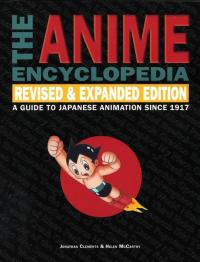
The Anime Encyclopedia: A Guide to Japanese Animation Since 1917 is a 2001 encyclopedia written by Jonathan Clements and Helen McCarthy. It was published in 2001 by Stone Bridge Press in the United States, and a "revised and expanded" edition was released in 2006. In the United Kingdom, it was published by Titan Books. The third edition was released on 3 March 2015 with the subtitle of A Century of Japanese Animation. It gives an overview of most of the famous anime works since 1917.

The Otaku Encyclopedia is a 2009 encyclopedia written by Patrick Galbraith and published by Kodansha which provides an overview of anime and manga topics, and interviews and profiles of important people in Japanese fandom.

Schoolgirl Strikers is a Japanese social network game developed and published by Square Enix.
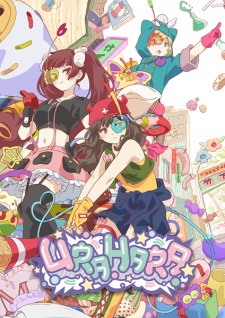
Urahara is an anime television series based on the webcomic PARK Harajuku: Crisis Team!, which is written by Patrick Macias and illustrated by Mugi Tanaka. The anime adaptation was co-produced by EMT Squared and Shirogumi and aired from October to December 2017.












